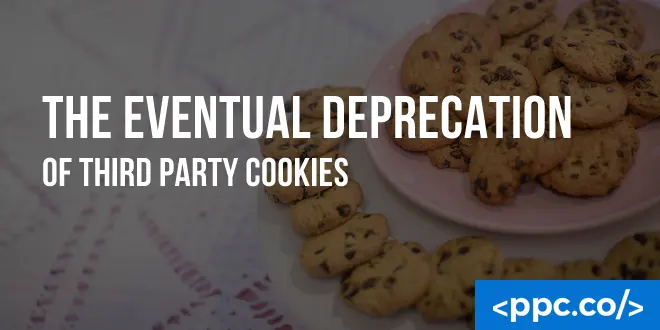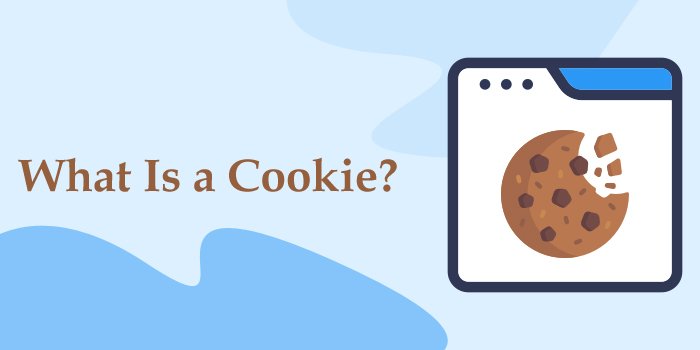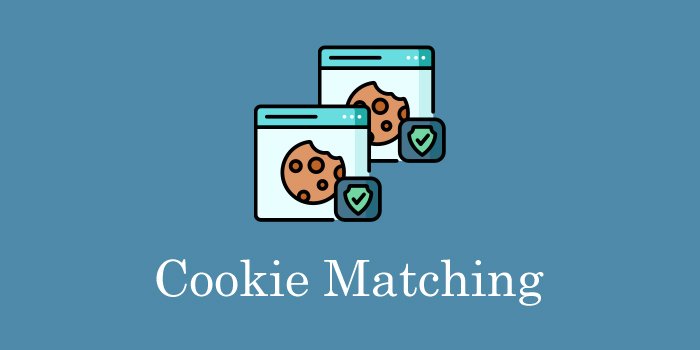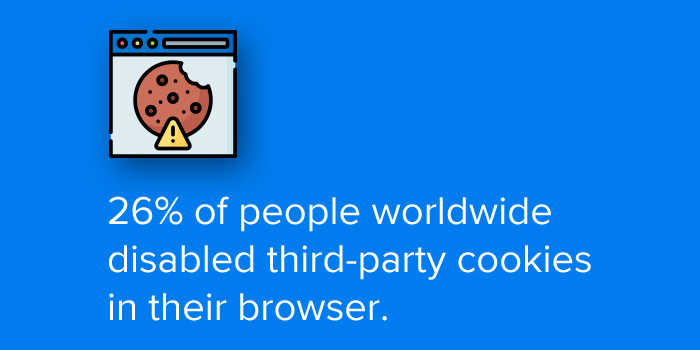


When you visit a website for the first time, you usually see a message like this:
“This website uses cookies on your computer to collect information about…”,
followed by a paragraph of jargony explanatory text and a link to a privacy policy. At the end, you’ll have the option of accepting or rejecting cookies.
To the average user, cookies are an inconsequential annoyance – some dumb little thing they have to click whenever visiting a new website.
But for marketers and advertisers, cookies are a very important source of information. Now, the potential death of third party cookies has caused some ripples in the industry.
So why are third party cookies on the chopping block? And what can you do as a marketer to prepare for this massive sea change?
Table of Contents
Toggle
In case you’re uninitiated, let’s go over the fundamentals. What exactly is a cookie?
Yes, we’ve all heard the jokes about the popular dessert, so don’t bother. In the context of digital interactions, a cookie is a type of data file that stores a tiny amount of information about a user. Collectively, cookies can tell you much about how a user interacts with a website – and sometimes, information about the users themselves.
Third party cookies are only one of three main types of cookie.
We have:
As PPC advertising experts, we usually consider cookies in the context of collecting user information we can then use for marketing purposes – but there are many other applications for cookies. For example, cookies are responsible for allowing you to use financial apps like PayPal on external sites. Cookies can also be used by cybercriminals and opportunists looking to exploit you or steal your identity – though these tend to be rare.
We’ve established that third party cookies are important for gathering information on users, which can then be used to optimize powerful marketing and advertising campaigns. We’ve also alluded to the deprecation, or death, of third party cookies.
Why are we predicting this?
We can already see some signs of a collective shift in how we view online privacy and third party data sharing. Web browsers like Mozilla’s Firefox and Apple’s Safari already block third party cookies by default; if users like the idea of sharing their data with advertisers, they can enable them (though this isn’t a frequent choice).
Google Chrome, as of the time of this article’s writing, still enables third party cookies by default, but this is set to change later in 2023. And with this change will come another important feature, or rather, a missing feature: users will not be able to turn on third party cookies. Once third party cookies disappear from Google Chrome, they’re never coming back – and it’s likely that all the other little web browsers will follow suit.
That’s on top of increasing online privacy concerns putting pressure on cookie-related strategies. Consumers are increasingly concerned about online privacy, regulatory organizations and governments around the world are introducing new data regulations, and brands all over the world are exercising more prudence and caution when collecting or using user data.

What does this mean for marketers?
Before we can fully answer that question, we need to talk about cookie matching. According to Google, “Cookie Matching is a feature that enables you to match your cookie—for example, an ID for a user that browsed your website—with a corresponding bidder-specific Google User ID, and construct user lists that can help you make more effective bidding choices.”
By some estimates, third party cookies match rates account for roughly 40 to 60 percent of the total user profile – meaning about half your user data depends on third party cookies. If users are actively blocking third party cookies, or if you don’t have any third party cookie data to draw from, you’re going to end up with half the user data you’d have otherwise.
This can have cascading consequences, ultimately costing you more money and reducing the potential effectiveness of your marketing and advertising campaign. If you can’t target users accurately, your click and conversion rates will go down. You’ll have a harder time finding the right people to target. And according to some experts, this could end up driving up the average cost of advertising.
On top of that, your data analytics will no longer be reliable. You’ll find it much harder to accurately measure the results of your campaign – and you might end up forming misleading conclusions that make you optimize your campaign in the wrong direction.

Keep in mind that this shift is already unfolding. As of late 2022, 26 percent of people around the world have third party cookies disabled in their browser of choice.
So, what can you do to prepare for this major shift in user data and advertising?
If there’s one important take away from all of this, it’s that the worlds of PPC advertising, consumer data collection, and even online privacy are going to change forever by the end of the year – and the transition has already begun. As is the case with all major marketing and advertising transitions, the companies that are capable of adapting and evolving are the ones that are going to thrive.
You only have two options, since you’re not going to convince Google Chrome to give third party cookies another shot. You can either adapt or you can suffer the consequences of remaining stagnant. It’s hard to say exactly what the short-term or long-term effects of missing third party cookies will be, but we can be confident that we’re in store for the biggest PPC ad disruption we’ve seen in years.
Whatever your goals and motivations are, it’s on you to take a close, analytical look at your PPC advertising strategy, increase your focus on first party tracking, and allow your advertising approach to evolve.
All this is much easier when you have the help of a competent, experienced PPC advertising agency (like ours!). If you’re ready for a free proposal, or if you’d like some more information before getting started – contact us today!
Please fill the below form to download the PDF
“*” indicates required fields.
Please fill the below form to download the PDF
“*” indicates required fields.
Please fill the below form to download the PDF
“*” indicates required fields.
Please fill the below form to download the PDF
“*” indicates required fields.
Please fill the below form to download the PDF
“*” indicates required fields.
Please fill the below form to download the PDF
“*” indicates required fields.